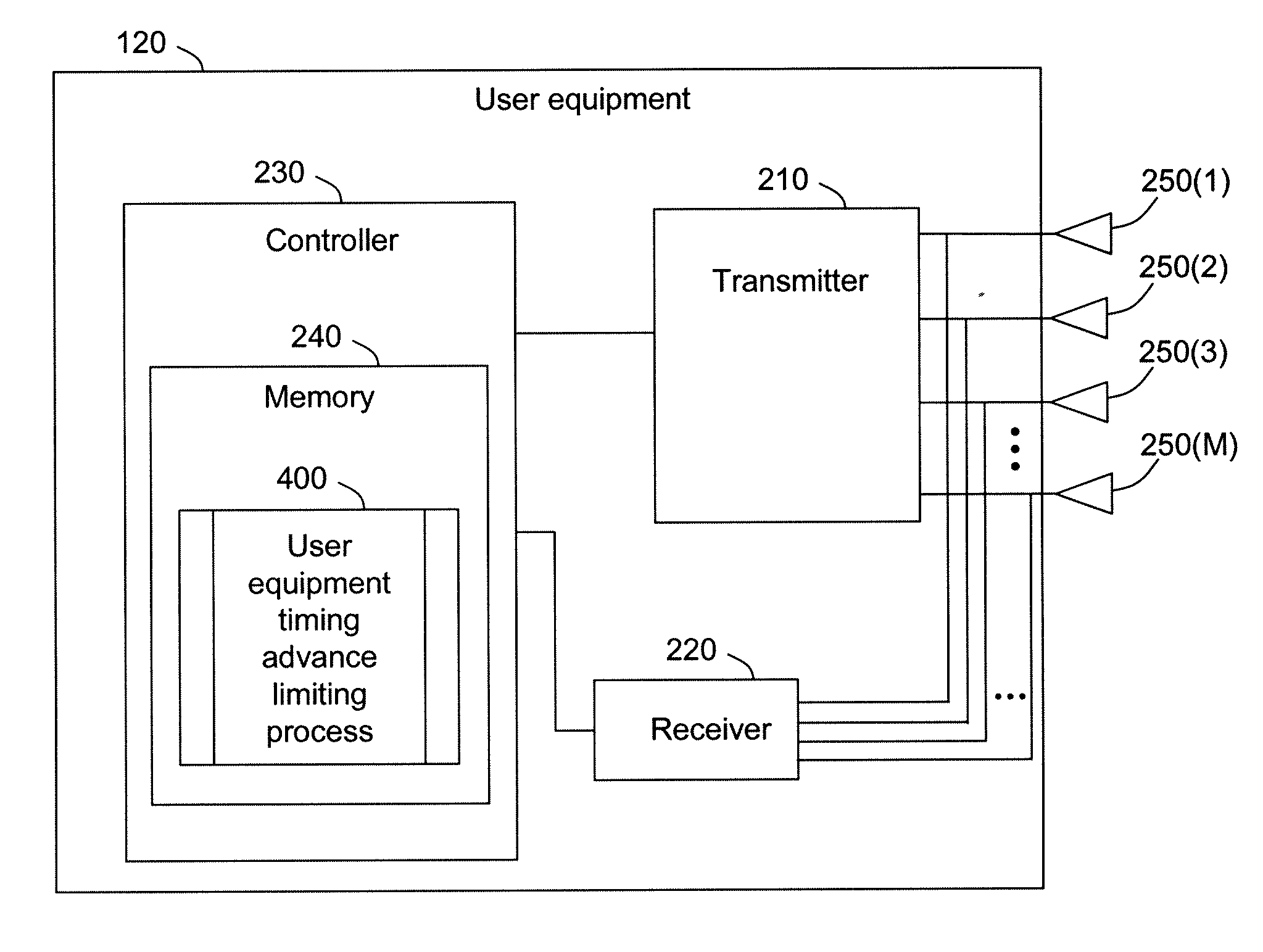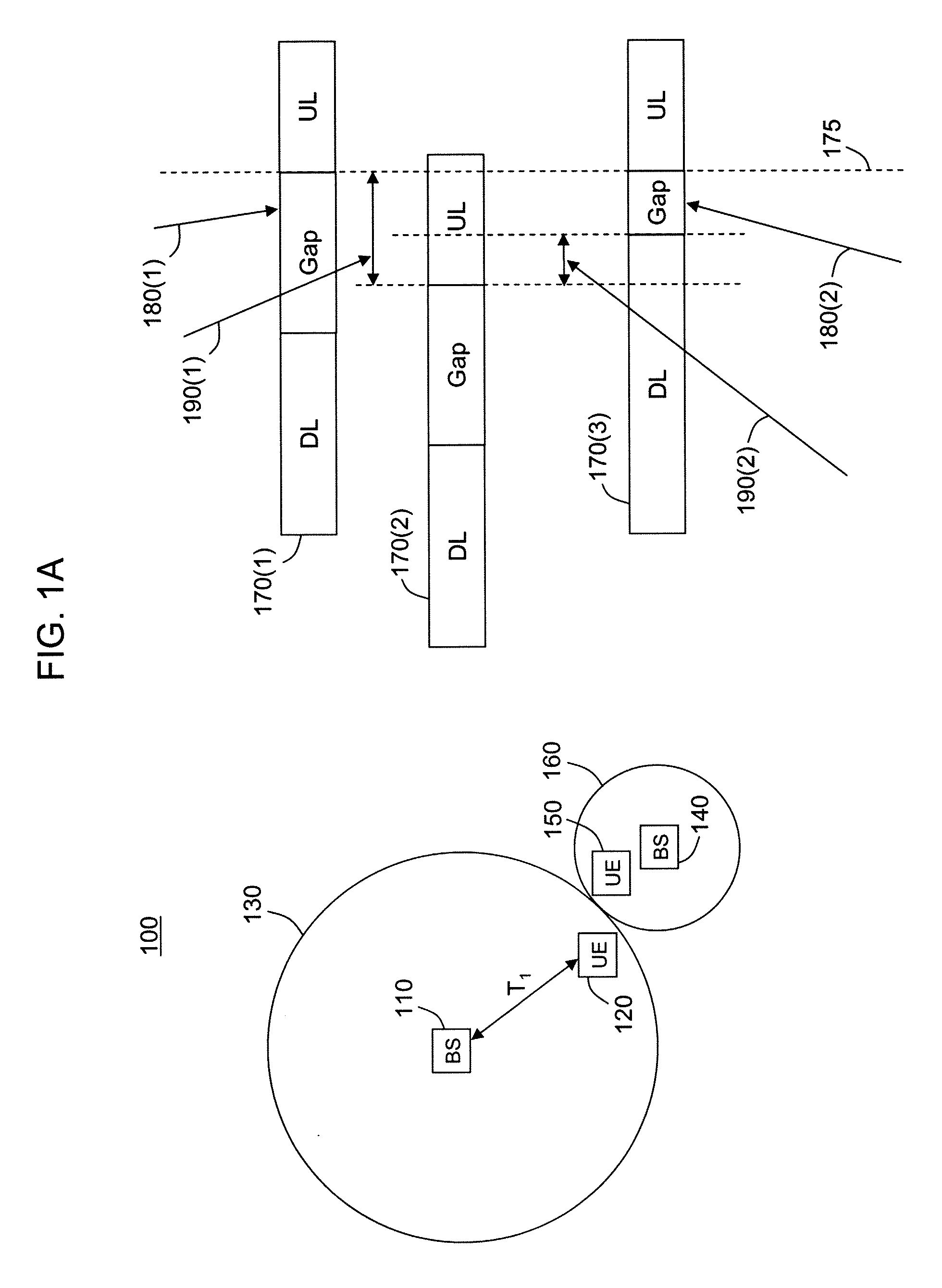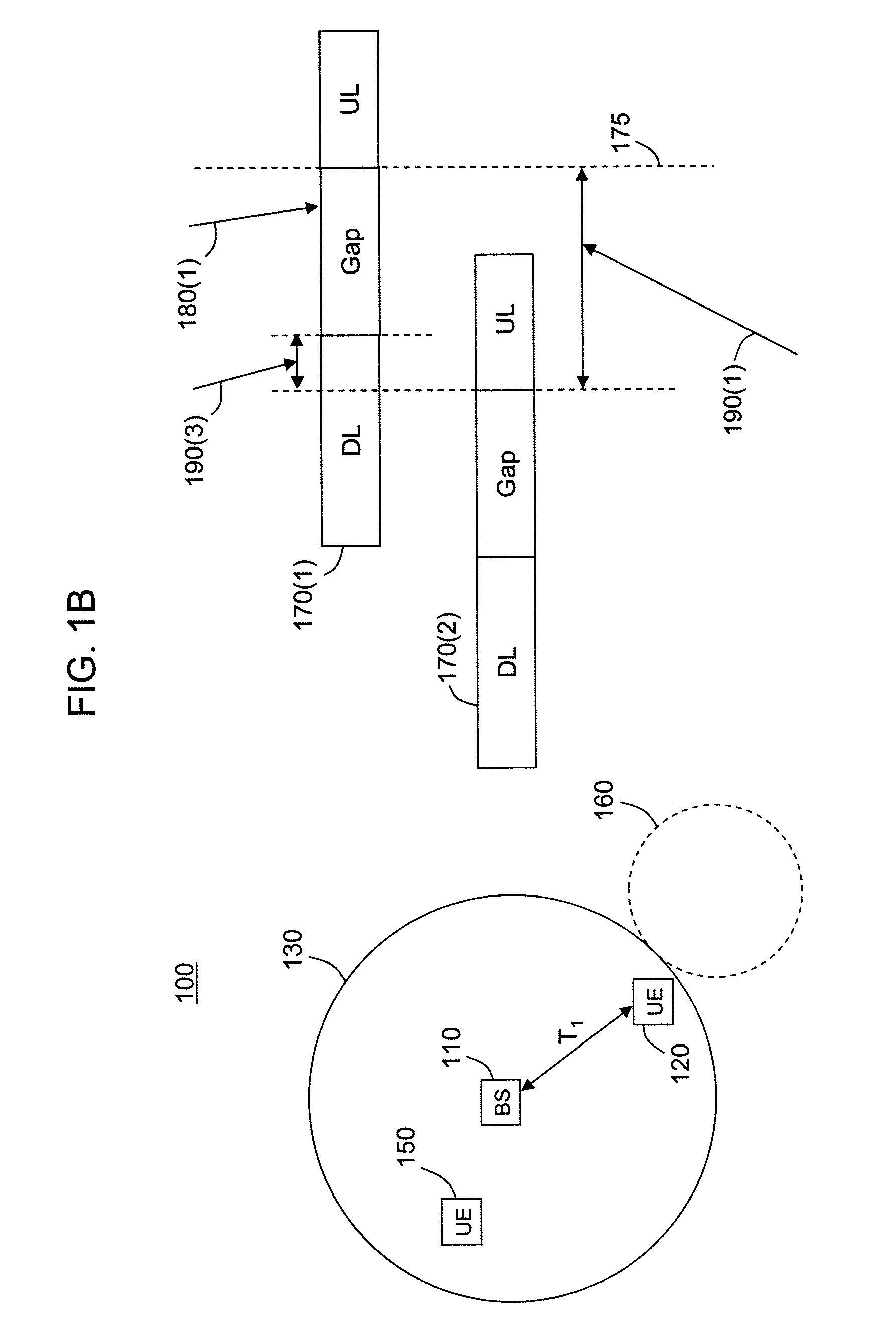Reducing Interference in Wireless Time Division Duplex Systems by Monitoring and Limiting Timing Advance
a wireless time division and duplex technology, applied in frequency-division multiplex, synchronisation arrangement, instruments, etc., can solve the problem of dropping the call associated with the user equipment device, and achieve the effect of restoring the call capability
- Summary
- Abstract
- Description
- Claims
- Application Information
AI Technical Summary
Benefits of technology
Problems solved by technology
Method used
Image
Examples
Embodiment Construction
[0016]Referring first to FIG. 1, a wireless time division duplex (TDD) radio communication system 100 is shown. The system 100 comprises a first wireless coverage area 130 and a second wireless coverage area 160. The first wireless coverage area 130 has a base station (BS) 110 and a user equipment (UE) device 120 while the second wireless coverage area 160 has a BS 140 and a UE 150. The UEs 120 and 150 may be fixed or mobile devices. The BSs 110 and 120 may connect to other wired data network facilities (not shown) and in that sense serve as a gateway or access point through which the UEs 120 and 150 have access to those data network facilities.
[0017]The BSs 110 and 140 may comprise a plurality of antennas and the UEs 120 and 150 may also comprise a plurality of antennas. The BSs 110 and 140 may wirelessly communicate with individual ones of the UEs 120 and 150 using a wideband wireless communication protocol in which the bandwidth is much larger than the coherent frequency bandwidt...
PUM
 Login to View More
Login to View More Abstract
Description
Claims
Application Information
 Login to View More
Login to View More - R&D
- Intellectual Property
- Life Sciences
- Materials
- Tech Scout
- Unparalleled Data Quality
- Higher Quality Content
- 60% Fewer Hallucinations
Browse by: Latest US Patents, China's latest patents, Technical Efficacy Thesaurus, Application Domain, Technology Topic, Popular Technical Reports.
© 2025 PatSnap. All rights reserved.Legal|Privacy policy|Modern Slavery Act Transparency Statement|Sitemap|About US| Contact US: help@patsnap.com



